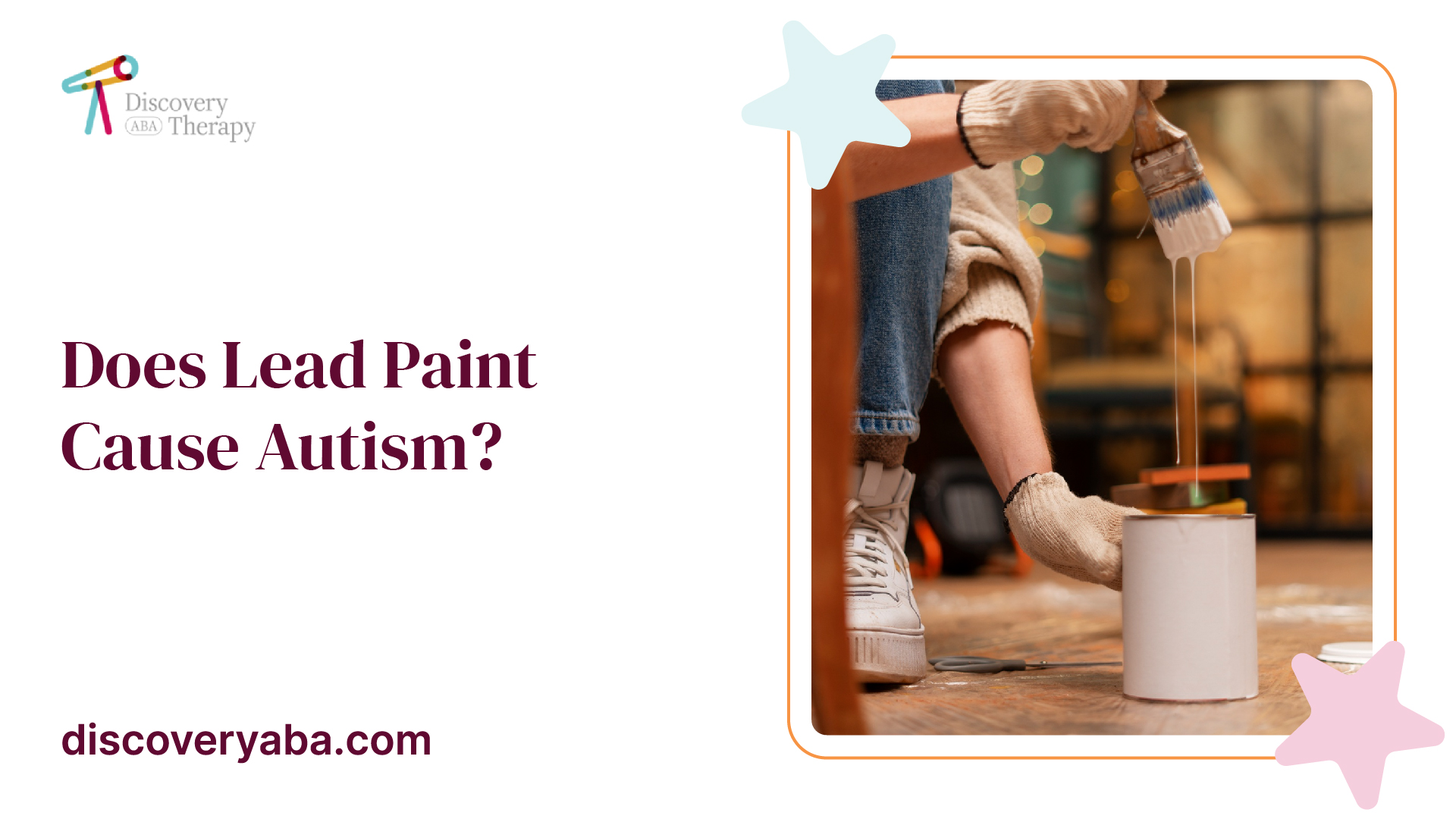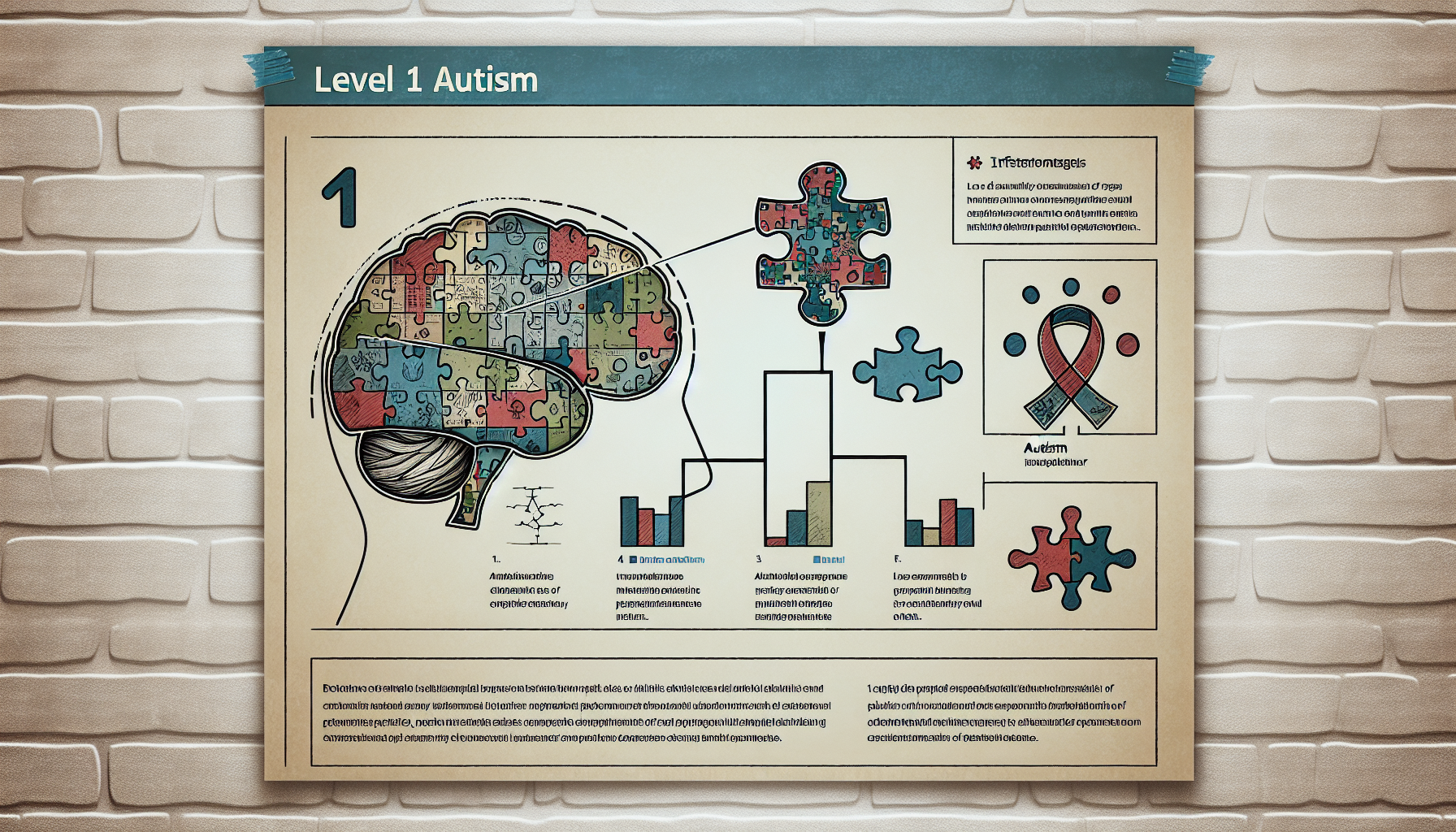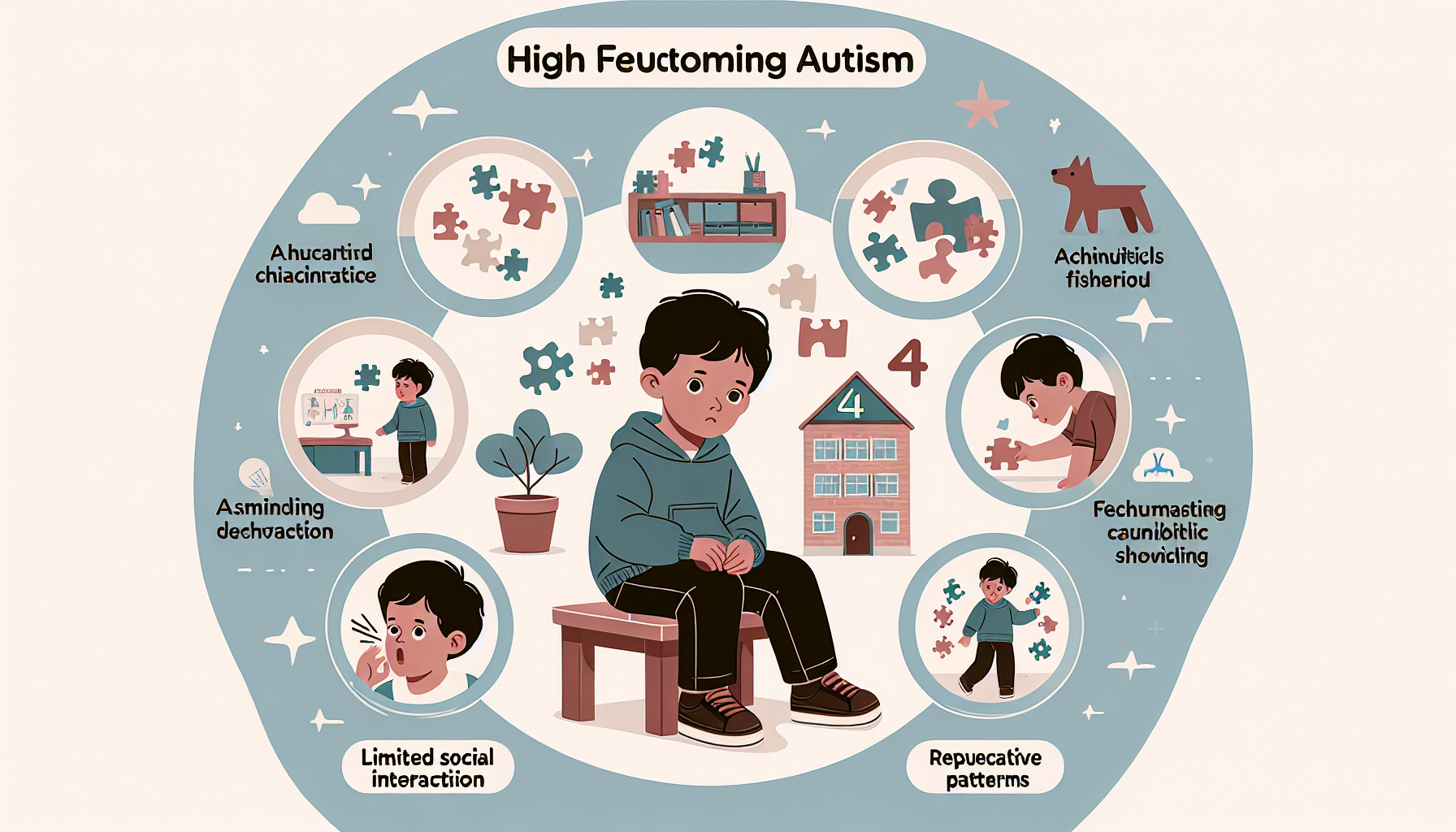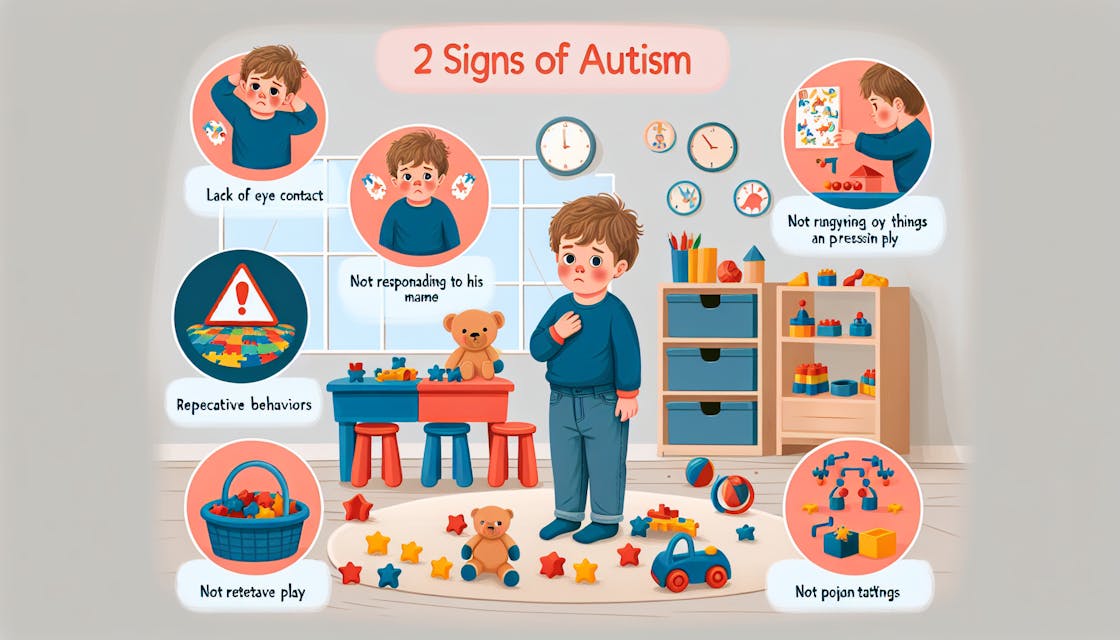Does Lead Paint Cause Autism?
Several studies have suggested a link between lead exposure and autism. One study published in the journal Environmental Health Perspectives found that children with higher levels of lead in their blood were more likely to develop autism.
.jpeg)
Does Lead Paint Cause Autism?
Autism is a developmental disorder that affects a person's ability to communicate and interact with others. The cause of autism is not fully understood, but many factors have been implicated in its development.

One of these factors is lead exposure, which has been linked to a range of developmental and behavioral problems in children. In this article, we will explore the question of whether lead paint causes autism.
Lead Exposure and Autism
Lead is a toxic metal that has been used in paint, gasoline, and other household products for many years. Exposure to lead can cause a range of health problems, including developmental delays, behavioral problems, and learning difficulties.
Children are particularly vulnerable to lead exposure, as their developing brains and bodies are more susceptible to the effects of toxic substances.
Several studies have suggested a link between lead exposure and autism. One study published in the journal Environmental Health Perspectives found that children with higher levels of lead in their blood were more likely to develop autism.
Another study published in the journal Pediatrics found that children with autism were more likely to have been exposed to lead during pregnancy.
While these studies suggest a link between lead exposure and autism, they do not prove that lead exposure causes autism. Other factors may be involved in the development of autism, and it is possible that lead exposure is simply one of many contributing factors.
Protect Your Baby: The Dangers of Lead Exposure While Pregnant
Lead exposure during pregnancy can have serious consequences for both the mother and the baby. Lead can cross the placenta and enter into the fetal bloodstream, where it can cause damage to developing organs and tissues.
This damage can lead to a range of health problems, including developmental delays, cognitive impairments, and behavioral problems.
Pregnant women who are exposed to high levels of lead may also experience complications during pregnancy, such as preterm birth or miscarriage. In addition, lead exposure has been linked to low birth weight and reduced head circumference in newborns.
It is important for pregnant women to take steps to minimize their exposure to lead. This includes avoiding products that may contain lead, such as certain types of paint or pottery. Pregnant women should also be cautious about consuming certain foods that may be contaminated with lead, such as some types of fish or canned goods.
If you are pregnant and concerned about your risk of lead exposure, talk to your healthcare provider. They can offer guidance on how to reduce your risk and monitor your health during pregnancy.
How Lead Exposure Can Affect Your Brain?
Lead exposure is not only harmful to children but also to adults. Studies have shown that long-term exposure to lead can cause cognitive impairments in adults, including decreased attention span, memory loss, and difficulty with decision-making.
These effects are particularly pronounced in individuals who have been exposed to high levels of lead over a prolonged period of time.
One study published in the journal Environmental Health Perspectives found that workers who were exposed to lead on the job had lower scores on tests of cognitive function than those who were not exposed. The study also found that the longer a person was exposed to lead, the greater their cognitive deficits.
Another study published in the Journal of Occupational and Environmental Medicine found that even low levels of lead exposure can have negative effects on cognitive function. The study followed a group of workers over 12 years and found that those with higher levels of lead in their blood had more rapid declines in cognitive function over time.
It is important for adults who work in industries where they may be exposed to lead, such as construction or manufacturing, to take steps to protect themselves from exposure. This includes wearing protective clothing and equipment and following proper safety protocols.
If you believe you may have been exposed to lead, it is important to talk to your healthcare provider about getting tested for lead poisoning. Early detection and treatment can help prevent further damage to your health.
The Symptoms of Lead Poisoning in Children
Lead poisoning can cause a range of symptoms and health problems in children. The severity of these symptoms depends on the level of lead exposure and the duration of the exposure.
In young children, lead poisoning can cause developmental delays, learning difficulties, and behavioral problems. Children with high levels of lead in their blood may have difficulty paying attention and may be hyperactive or aggressive.
Other symptoms of lead poisoning in children include stomach pain, constipation, loss of appetite, and weight loss. Children with severe lead poisoning may experience seizures or have difficulty walking or speaking.
Lead poisoning can also affect a child's growth and development. Children with high levels of lead in their blood may be shorter than average and may have delayed puberty.
If you suspect that your child has been exposed to lead, it is important to talk to your healthcare provider about getting them tested for lead poisoning. Early detection and treatment are essential for preventing further damage to your child's health.
How to test for lead in your home?
If your home was built before 1978, it may contain lead-based paint. Even if the paint is covered with newer layers of paint, it can still be a hazard if it begins to deteriorate or peel. Testing for lead in your home is an important step in protecting yourself and your family from the harmful effects of lead exposure.
The most reliable way to test for lead in your home is to hire a professional lead inspector. A certified inspector will use specialized equipment to test for the presence of lead in paint, dust, and soil.
If you prefer to do the testing yourself, there are several DIY options available. Home test kits are available at most hardware stores and online retailers. These kits typically include swabs or strips that you can use to collect samples of paint or dust from surfaces around your home.
When using a home test kit, it's important to follow the instructions carefully. Different kits may have different procedures and may require different types of samples (e.g., dust vs. paint).
While these kits can give you an indication of whether or not lead is present, they may not be as accurate as a professional inspection.
If you do find lead in your home, it's important to take steps to address the issue. This may involve hiring a professional contractor to remove or encapsulate the lead-based paint. In some cases, simply covering the area with new paint or wallpaper may be sufficient.
Don't ignore the potential danger that comes with potential exposure to lead-based paints at homes built before 1978; take action today by hiring a professional inspector or conducting tests on your own using one of many available DIY testing kits!
The Importance of Avoiding Lead Exposure
Regardless of whether lead exposure causes autism, it is important to avoid exposure to this toxic metal. Lead can have a range of negative effects on health, including developmental delays, impaired cognitive function, and behavioral problems. Children who are exposed to lead may experience lifelong health problems as a result.
To reduce the risk of lead exposure, it is important to take steps to avoid products that contain lead. This includes avoiding lead-based paint, which was banned for residential use in the United States in 1978.
If you live in an older home, it is important to have the paint tested for lead and to take steps to remove any lead-based paint that is present.
Tips to Limit Your Exposure to Lead in the Environment
Lead exposure can be reduced by taking some simple steps to avoid contact with lead in the environment. Here are some ways to reduce exposure to lead:
- Use lead-free paint: If you are renovating your home, make sure that any new paint you use is free from lead. Lead-based paint was banned in the United States in 1978, but older homes may still have lead-based paint on their walls.
- Keep your home clean: Dust and dirt can contain lead particles that can be ingested or inhaled. Regularly cleaning floors, windowsills, and other surfaces can help reduce the amount of dust and dirt in your home.
- Wash hands frequently: Washing hands frequently with soap and water can help remove any lead particles that may have been picked up from contaminated surfaces.
- Use a water filter: If you live in an area with old pipes or suspect that your water may contain lead, using a water filter can help reduce your exposure to lead.
- Avoid certain hobbies or jobs: Some hobbies or jobs involve working with materials that contain lead, such as stained glass making or construction work. If possible, try to avoid these activities or take steps to minimize your exposure to lead while doing them.
By taking these simple steps, you can help reduce your exposure to lead and protect yourself and your family from the potential health effects of this toxic metal.
Alternative Materials to Lead-Based Paint
While lead-based paint was once a popular choice for its durability and long-lasting color, we now know that it poses serious health risks. Fortunately, there are many alternative materials available that can be used instead of lead-based paint.
One popular alternative to lead-based paint is low-VOC (volatile organic compounds) or no-VOC paint. These paints contain fewer harmful chemicals than traditional paints and are less likely to emit toxic fumes into the air. They come in a range of colors and finishes and can be used on both interior and exterior surfaces.
Another option is milk paint, which is made from all-natural ingredients like milk protein, lime, and clay. Milk paint has been used for centuries and is known for its rich, matte finish. It is also non-toxic and environmentally friendly.
For those looking for a more durable option, epoxy coatings may be a good choice. Epoxy coatings are often used in industrial settings because of their resistance to chemicals, abrasion, and impact. They are typically applied as a two-part system consisting of a resin and hardener.
In addition to these options, there are many other types of non-toxic paints and coatings available on the market today. When choosing an alternative material to lead-based paint, it's important to consider factors such as durability, cost, application method, and environmental impact.
By choosing non-toxic alternatives to lead-based paint, you can help protect yourself and your family from the harmful effects of lead exposure while still achieving the look you desire for your home or project.
FAQs
Is there a safe level of lead exposure?
There is no known safe level of lead exposure. Even low levels of exposure can have negative effects on health, particularly in children and pregnant women.
How does lead enter the body?
Lead can enter the body through ingestion or inhalation. Children are particularly vulnerable to ingesting lead because they may put their hands or objects that contain lead dust in their mouth.
Can lead poisoning be treated?
Yes, lead poisoning can be treated. The most common treatment is chelation therapy, which involves administering medication that binds to the lead in the body and allows it to be excreted through urine.
How can I protect my family from lead exposure?
You can protect your family from lead exposure by taking steps to avoid products that contain lead, such as certain types of paint or pottery. You should also ensure that your home is free from sources of lead contamination, such as old pipes or contaminated soil.
Additionally, you should encourage frequent hand washing and provide a healthy diet rich in iron and calcium, which can help reduce the absorption of ingested lead.
Are there any long-term effects of lead poisoning?
Yes, prolonged exposure to high levels of lead can cause permanent damage to organs and tissues in the body. This damage may result in cognitive impairments, behavioral problems, and other serious health issues.
What should I do if I suspect my child has been exposed to lead?
If you suspect your child has been exposed to lead, it is important to talk to your healthcare provider about getting them tested for lead poisoning. Early detection and treatment are essential for preventing further damage to your child's health.
Conclusion
The question of whether lead paint causes autism is a complex one, and the evidence is not conclusive. While some studies have suggested a link between lead exposure and autism, other factors may be involved in the development of this disorder.
However, it is clear that lead exposure can have a range of negative effects on health, and it is important to take steps to avoid exposure to this toxic metal. By avoiding products that contain lead and taking steps to remove lead-based paint from older homes, we can help to protect the health of ourselves and our children.
Sources
Find More Articles
Contact us
North Carolina, Tennessee, Nevada, New Jersey, Utah, Virginia
New Hampshire, Maine
Massachusetts, Indiana, Arizona, Georgia
.avif)














.jpeg)
.jpeg)



.jpeg)
.jpeg)











.jpeg)






.jpeg)





.jpeg)





























%2520(1).jpeg)

.jpeg)












.jpeg)










